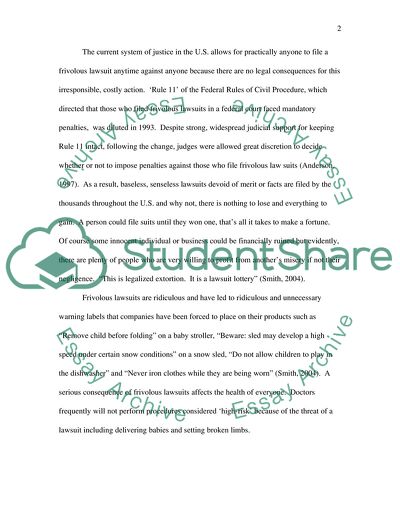Cite this document
(Lawsuits in the USA Case Study Example | Topics and Well Written Essays - 1662 words, n.d.)
Lawsuits in the USA Case Study Example | Topics and Well Written Essays - 1662 words. Retrieved from https://studentshare.org/law/1709349-argumentative-essay-to-reducing-frivolous-lawsuits
Lawsuits in the USA Case Study Example | Topics and Well Written Essays - 1662 words. Retrieved from https://studentshare.org/law/1709349-argumentative-essay-to-reducing-frivolous-lawsuits
(Lawsuits in the USA Case Study Example | Topics and Well Written Essays - 1662 Words)
Lawsuits in the USA Case Study Example | Topics and Well Written Essays - 1662 Words. https://studentshare.org/law/1709349-argumentative-essay-to-reducing-frivolous-lawsuits.
Lawsuits in the USA Case Study Example | Topics and Well Written Essays - 1662 Words. https://studentshare.org/law/1709349-argumentative-essay-to-reducing-frivolous-lawsuits.
“Lawsuits in the USA Case Study Example | Topics and Well Written Essays - 1662 Words”, n.d. https://studentshare.org/law/1709349-argumentative-essay-to-reducing-frivolous-lawsuits.


